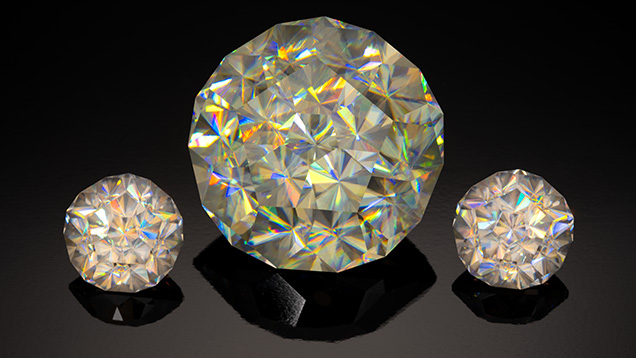Exceptionally Large Synthetic Rutile

The Carlsbad laboratory received three light yellow modified round brilliants weighing 11.13, 11.91, and 110.18 ct (figure 1) for identification reports. Standard gemological testing revealed the stones to be synthetic rutile based on over-the-limit refractive index readings and extreme fire and doubling, an identification that was supported by Raman spectroscopy.
Of particular note was the astonishing size of these stones. The 110.18 ct synthetic rutile is the largest encountered in the GIA laboratory. Even the smaller 11.13 ct and 11.91 ct stones are much larger than normal for this material, which is usually seen in sizes up to several carats. The owner of the stones indicated that the manufacturer had to modify their furnace to accommodate growth of the 110.18 ct crystal. Also notable were the novel facet pattern and precision cutting usually only seen in the high-end collector market.

Interestingly, the two smaller stones had a much lighter yellow color than the 110.18 ct stone, which was notable even considering the shorter light path length through the smaller stones. Chemical analysis using laser ablation–inductively coupled plasma–mass spectrometry showed a higher concentration of aluminum in these two samples (~80 ppm Al compared to ~3 ppm). The difference in color was also demonstrated in the ultraviolet/visible/near-infrared absorption spectra (figure 2). This finding aligns with the practice of growing rutile doped with small amounts of aluminum to bring the appearance of the material closer to nearly colorless (C.H. Moore, “Rutile boule and method of making the same,” U.S. Patent 2,715,070, issued August 9, 1955). Additionally, the owner indicated that the two smaller rutile crystals were grown by National Lead Co. between 1961 and 1964, while the larger stone is from a modern producer.



